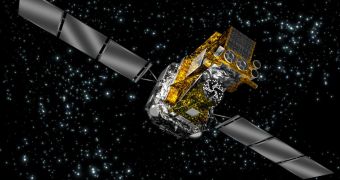One of the main strides in the field of physics is to unite the nature of space proposed by Albert Einstein's Theory of General Relativity with the one proposed by quantum theory. Readings collected by a telescope in Earth's orbit are now making this effort even harder.
The INTErnational Gamma-Ray Astrophysics Laboratory (INTEGRAL) is a space observatory operated by the European Space Agency (ESA), with cooperation from NASA and the Russian Federal Space Agency (RosCosmos).
It was the heaviest payload ESA ever launched to space, and has the most complex and sensitive gamma-ray instruments of any other telescopes. The entire spacecraft is built on the same bus used by the famous ESA XMM-Newton X-ray observatory.
As physicists are trying to reconcile Einstein's idea of smooth space with quantum theory's granular approach, they were expecting telescopes such as INTEGRAL to come up with answers.
What Einstein based his entire theory on was the fact that space, regardless of scale, was a smooth construct. Quantum theory is proposing that, at the smallest levels, space is in fact made of tiny grains, like sand on a beach.
But INTEGRAL is showing that the underlying quantum ‘graininess’ of space exists in fact that much smaller scales than even quantum theory previously predicted. The new data place stringent new limits on the maximum sizes these grains can take.
The telescope is able to conduct such advanced studies because gamma-rays are influenced by these grains as they travel through space. They become twisted, oscillate, and can change their direction. Astrophysicists call this property polarization.
Using a theoretical approach, experts determined that its possible to calculate the size of the grains by analyzing the difference in polarization between high-energy and low-energy gamma rays. Given INTEGRAL's capabilities, its readings are more than trustworthy.
Quantum theory proposes a scale of 10-35 meters for the smallest grains, considering that a millimeter if 10-3 meters. But INTEGRAL data are showing that quantum graininess must be at a level of 10-48 meters or smaller.
“This is a very important result in fundamental physics and will rule out some string theories and quantum loop gravity theories,” CEA Saclay expert Philippe Laurent explains.
“Fundamental physics is a less obvious application for the gamma-ray observatory, INTEGRAL. Nevertheless, it has allowed us to take a big step forward in investigating the nature of space itself,” explains ESA INTEGRAL project scientist Christoph Winkler.

 14 DAY TRIAL //
14 DAY TRIAL //